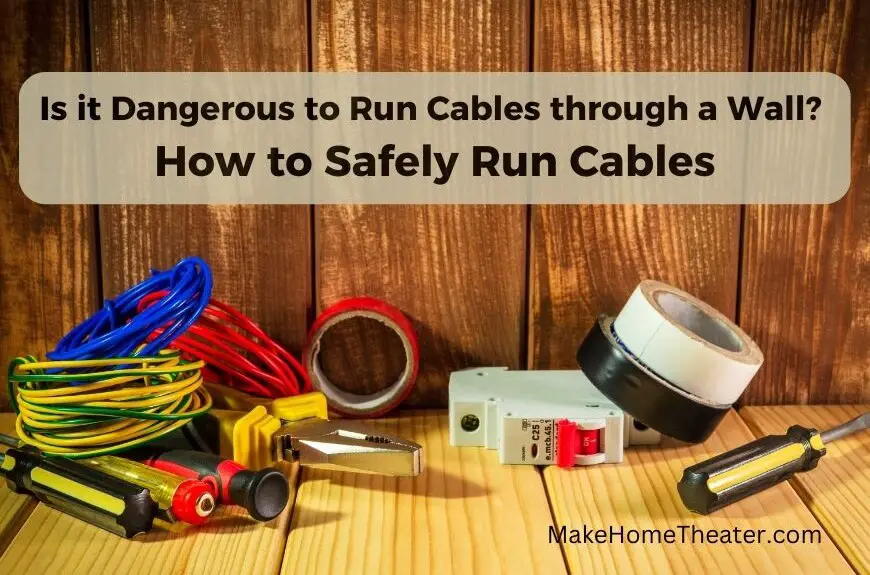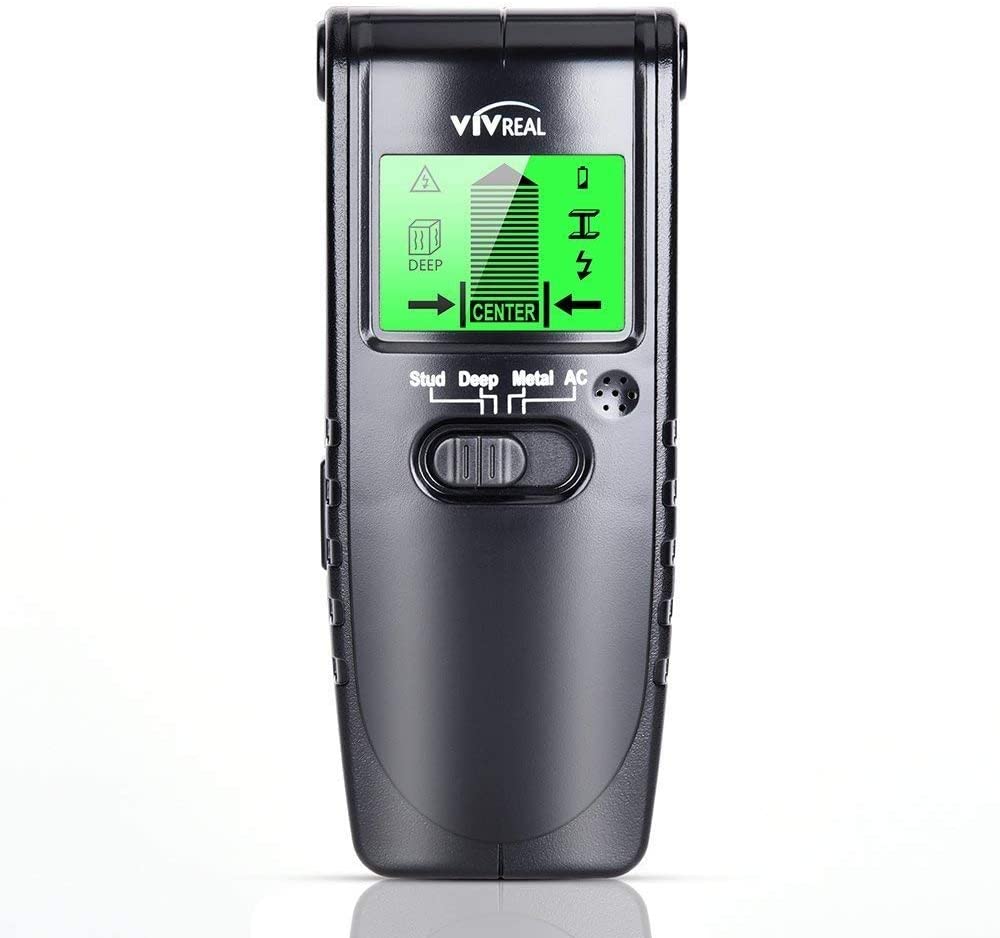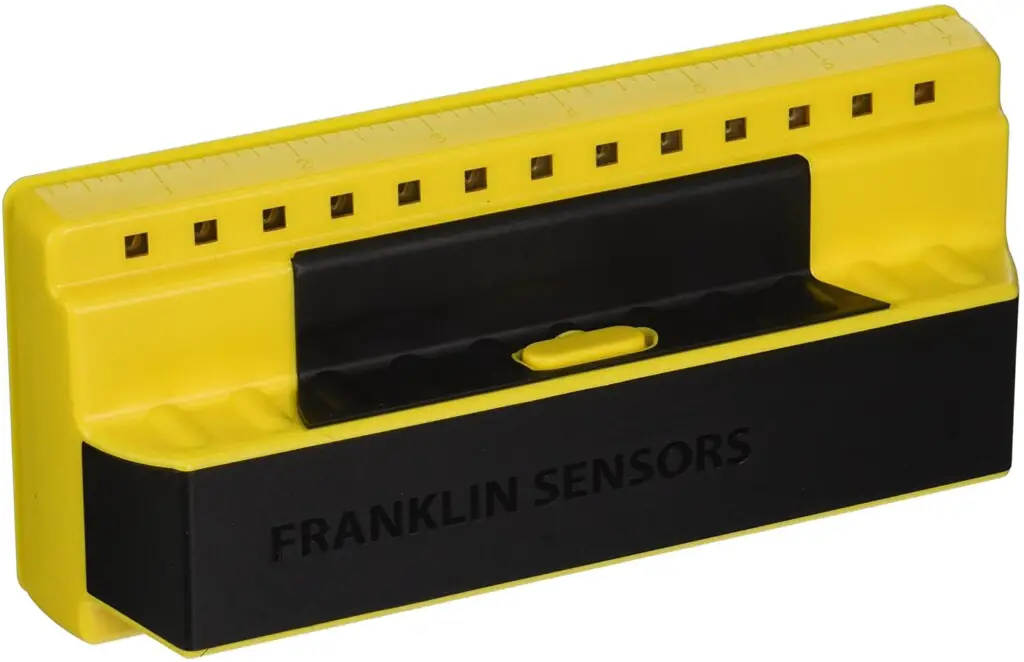Running cables through walls is a common task, but it’s important to know if it’s safe or not. The answer depends on a few factors. It could be dangerous if cables are run in a certain way, or it might break the National Electric Code (NEC) regulations. Our topic in this article is how to safely run cables.
In this article, I want to make sure you run cables through your home safely. I won’t go into detail about the NEC. Instead, I’ll focus on how to add audio, video, or other equipment to your already-built home.
As a professional, I’ve run thousands of cables for customers in their homes and businesses. Here are some methods and ideas I use to ensure safe and effective cable running.
Table of Contents
Safely Run Cables Through a Wall
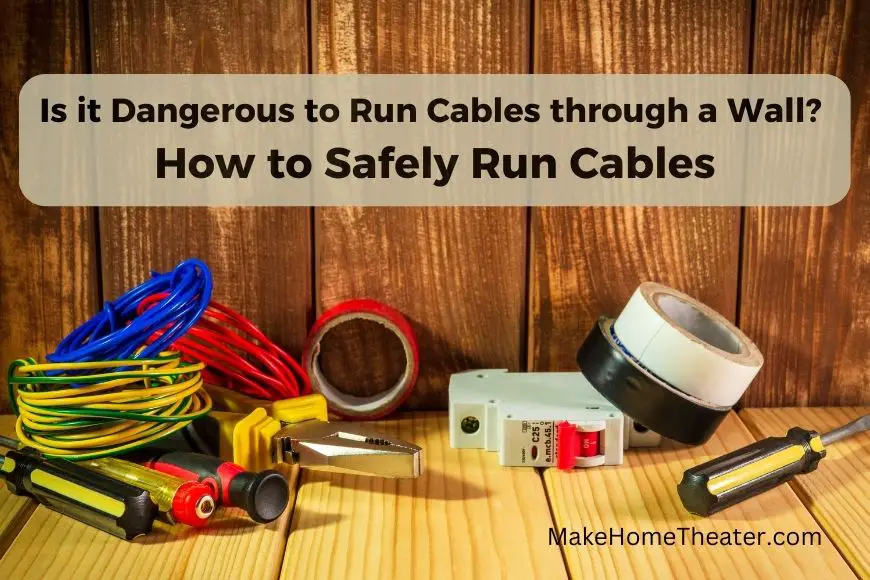
Running cables through walls seems like a simple task, but it’s important to take precautions to ensure safety. Before you start cutting holes in your wall, it’s crucial to have a plan. In this day and age, we have access to advanced technology, so let’s use it to our advantage.
Here are some tips to keep in mind when running cables through walls:
- Know what is behind the wall before you start.
- Do not run power cables inside walls.
- Keep cables away from electrical lines.
- Low voltage and other cables can be run in bundles.
- Inspect your cables before you run them.
Know what is behind the wall before you start
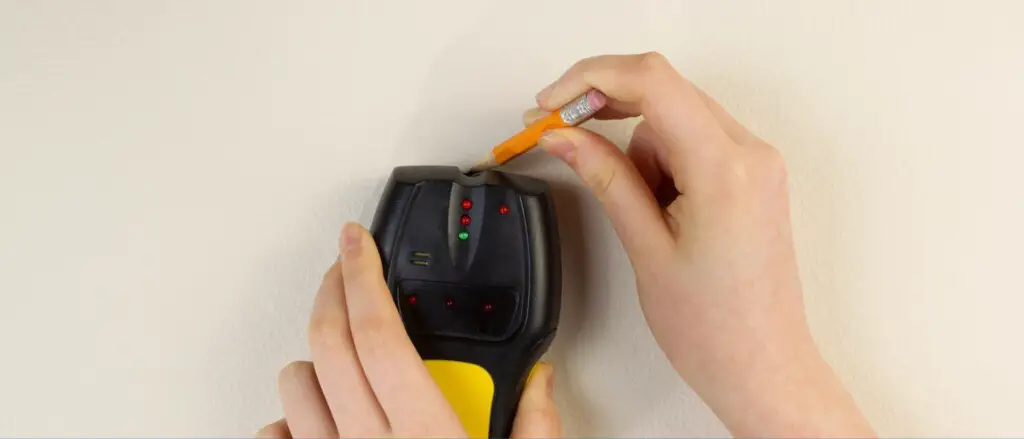
Before you start cutting holes in your wall, it’s important to know what’s behind it. A simple way to find out is to use a stud finder (on Aamzon). There are many affordable options available on Amazon, but I personally recommend the ProSensor 710 (also on Amazon). It’s what I used when I worked as an audio/video installer and it works great.
To use the stud finder, simply scan the area where you plan to run your cables. Note the distance between the studs and any unusual readings. These readings could be pipes, electrical wires, or a false reading from the stud finder, depending on the type of wall and its location in your house.
If there are horizontal studs across the wall, these are called fireblocks. To run your cables through fireblocks, you can either use a flex bit to drill through it or cut out a piece of drywall that’s directly over the fireblock.
If you choose to cut the drywall, you’ll need to drill a hole, run the cables, then patch the hole back up. This method requires more work, as you’ll need to apply mud, sand, and paint the area. But both methods work well, it just depends on your preference and how much work you’re willing to put in.
Do not run power cables inside walls
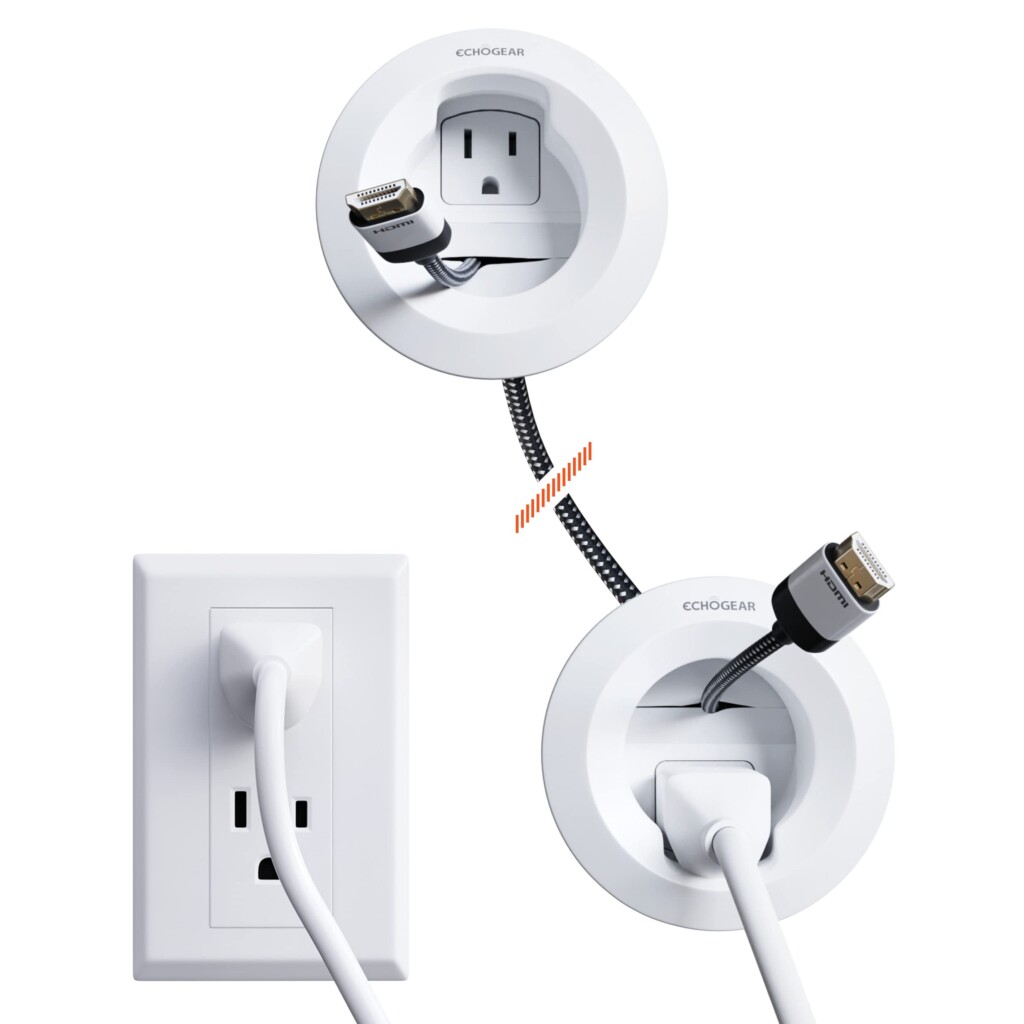
It’s best to avoid running power cables through walls. This is actually against the National Electrical Code (NEC) article 400.8. Power cables for televisions, receivers, and other similar devices should not be used as a substitute for permanent wiring, such as outlets.
Running power cables through walls may lead to a fire, and in such a case, the insurance company might not cover the damages. If you need to power your television or other devices, there are several safe and legal options to choose from.
One option is to hire an electrician to install a new outlet professionally. Another option is to use a Power Bridge device (on Amazon) , which is available on Amazon. This device is safe to use and follows NEC regulations.
If you have experience with electrical work, you can also install a new outlet yourself. This option requires a bit more work, but it’s a safer and more compliant way to run cables. By following the NEC regulations, you can ensure that your cables are run safely and securely.
Keep cables away from electrical lines
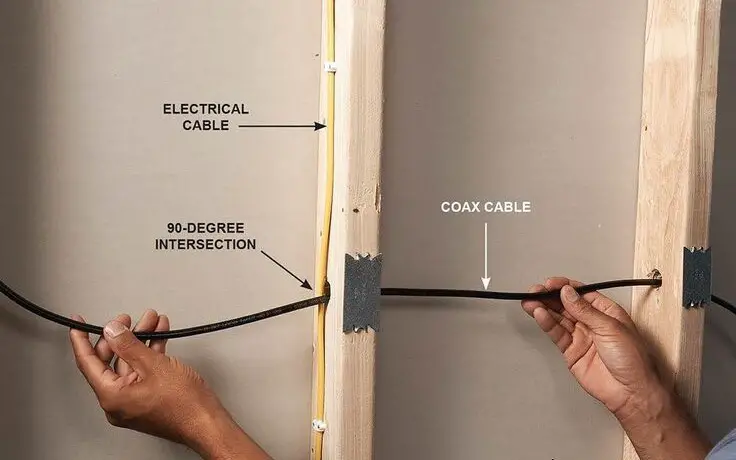
To ensure safe running of cables, it’s important to keep low-voltage cables and electrical lines separate. Interference in signals can occur if they are too close. Moreover, uninsulated contact between electrical wire and low-voltage cable can cause serious damage to the equipment or even result in a fire.
It’s recommended to maintain a distance of at least 6 inches between the two types of wiring. But, now, most cables are well-shielded, so a distance of an inch should be sufficient. This rule applies to light fixtures as well.
When running speaker wire to in-ceiling speakers, make sure it’s placed away from lighting fixtures. Some lighting fixtures can produce high levels of electromagnetic interference (EMI), which can also impact low-voltage cables.
Low voltage and other cables can be run in bundles
Always inspect the cables before you run them. Make sure there are no frayed or damaged areas. If you do find any damaged areas, it’s best to replace the entire cable. This is because damaged cables can cause interference and other issues.
Make sure the connectors are securely fastened to the cables. Loose connectors can cause poor signal quality and also create issues with the performance of your devices.
When running cables through the walls, be mindful of how much slack you leave. Leave enough slack so you can still access the connectors, but not so much that the cables are sagging. This not only looks unsightly, but it can also lead to damage to the cables.
Make sure the cables are properly labeled so you can easily identify which cable goes to which device. This will make it much easier if you ever need to troubleshoot an issue or make changes to your setup.
Inspect your cables before you run them
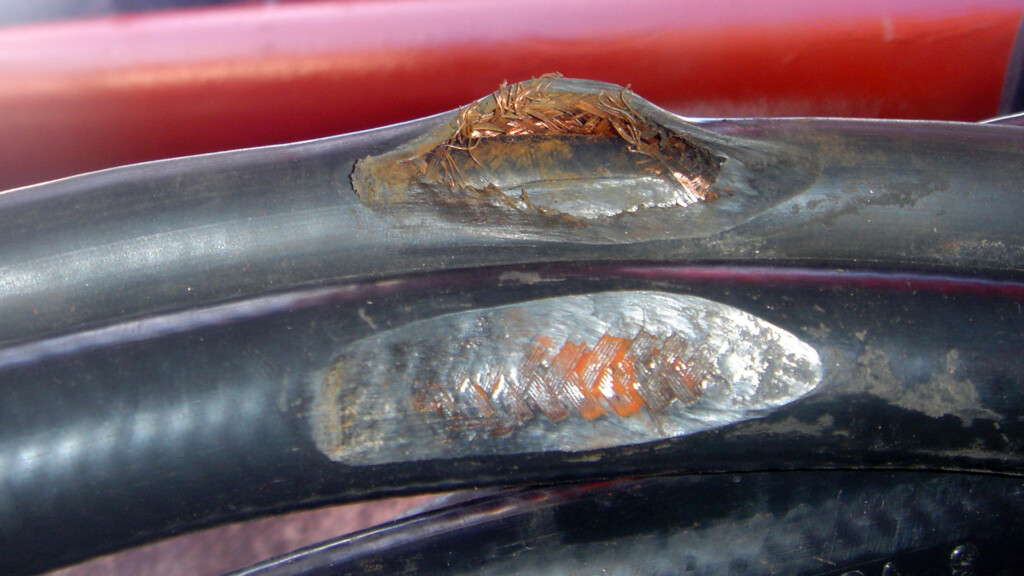
Before you start installing cables, make sure they are in good condition. There should be no cuts, tears, or any other damage. Good-quality cables are important for ensuring smooth operation.
Before installing the cables in the wall, it’s wise to test them. This way, you’ll know if they are working or not. If they are not working, you can fix the issue before you run the cables through the wall. This saves you time and hassle in the long run. Trust us, you don’t want to have to pull a cable out once it’s already in the wall because it’s not working.
To Sum Up
Running most cables through a wall is generally safe. However, there is one exception: standard power cables. These cables generate more heat than other cables and can cause electrical fires if they are damaged or have issues with the device. To avoid this risk, simply install an electrical outlet where the device is located.
Related Q&A

What is the difference between low-voltage and power cables?
Low-voltage cables are used for audio, video, and other equipment, while power cables are used for powering televisions, receivers, etc.
Is it safe to run cables near electrical lines?
No, it’s not safe to run low-voltage cables near electrical lines as it can cause interference and serious damage to the equipment.
What is the minimum distance between electrical lines and low-voltage cables?
It’s suggested to maintain at least 6 inches between electrical and low-voltage wiring.
How do I know what’s behind the wall before running cables?
Use a stud finder to locate the wall studs and other objects behind the wall.
Can I tap on the wall to figure out what’s behind it?
No, tapping on the wall is an inconsistent method unless you have a trained ear.
What is a fireblock?
Fireblocks are horizontal studs running across the wall.
How can I run cables through a fireblock?
You can either use a flex bit to drill through it or cut out a piece of drywall and run the cable through it.
What should I use instead of running power cables through walls?
Hire an electrician to professionally install a new outlet or use a Power Bridge to install a semi-permanent outlet.
Can I run cables through any type of wall?
It depends on the type of wall and the objects behind it.
How do I prevent interference between cables and electrical lines?
Keep low-voltage cables and electrical lines at least 6 inches apart.
What can cause EMI?
Some lighting fixtures can cause EMI and interfere with low-voltage cabling.
How can I safely run speaker wire to in-ceiling speakers?
Make sure to keep the wiring an acceptable distance from the lighting fixture to avoid EMI.
Is it necessary to inspect cables before running them?
Yes, it’s important to inspect cables before running them to ensure they’re in good condition.
Can I run multiple cables in a bundle?
Yes, you can run low voltage and other cables in bundles.
How can I safely run cables through a wall?
Know what’s behind the wall, avoid running power cables inside walls, avoid running cables near electrical lines, run low voltage and other cables in bundles, and inspect your cables before running them.
What is the ProSensor 710?
The ProSensor 710 is a high-quality stud finder available on Amazon.
Can insurance cover damages if a fire results from running power cables through walls?
No, if a fire results from running power cables through walls, the insurance company may not cover the damages.
Is running cables through a wall difficult?
It depends on the type of wall and the objects behind it, but it’s important to have a solid plan and follow safety guidelines.
Latest Posts
- What is Bluetooth 5? All You Need to Know
- Can Cables Go Bad Over Time?
- What Is an HDMI Audio Extractor? (All You Need to Know)
- Can You Use a Projector for Daily Basis TV Watching?
- How HDMI ARC Works with Soundbars
- IR Repeater Kits Explained – How Does an IR Repeater Work?
- What is HDMI EDID? All you Need to Know
- What is a 4K Soundbar – Do You Need a 4K Soundbar For Your 4K TV?
- Playing Audio Through AUX and Bluetooth at the Same Time?


